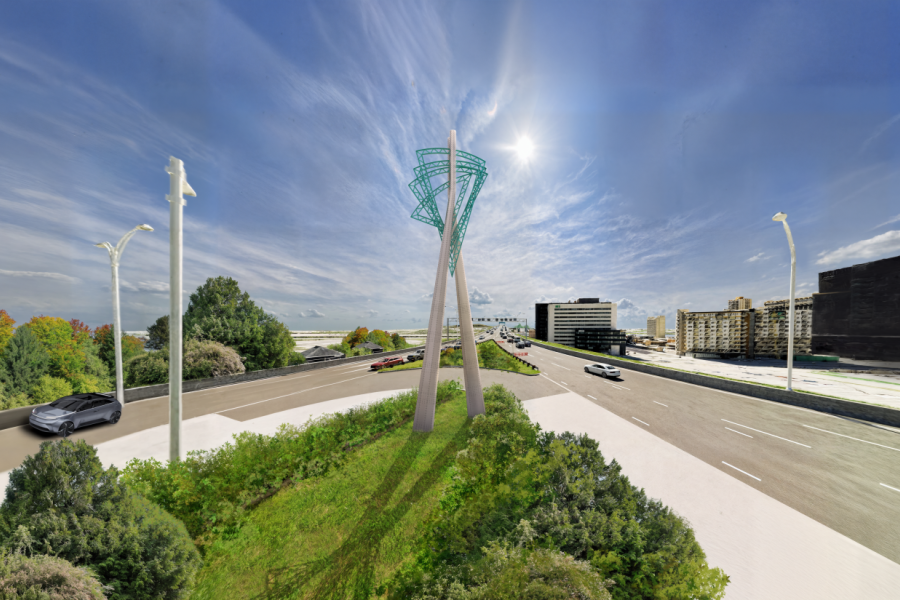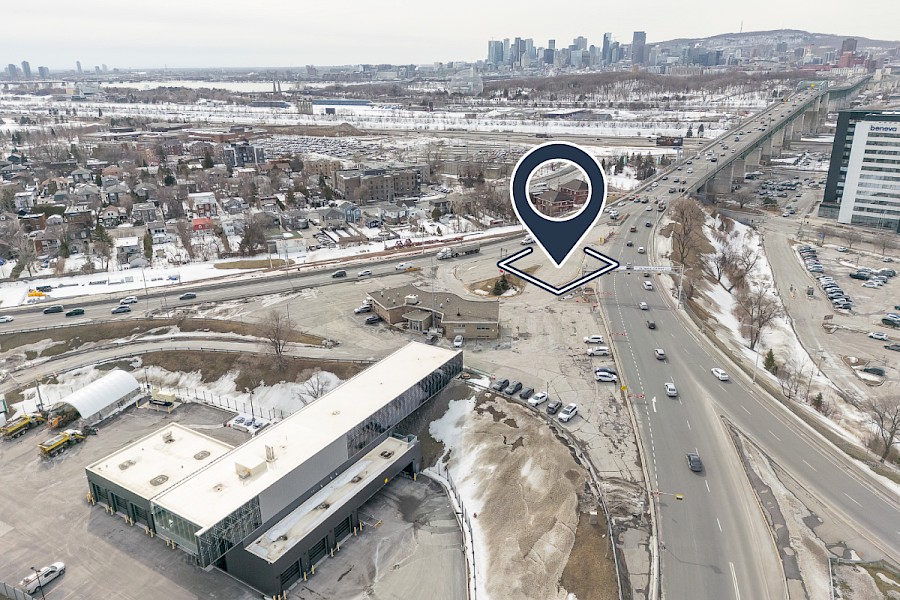- © 2025 The Jacques Cartier and Champlain Bridges Incorporated
- Terms of Use
- Site Map
JCCBI plans to add a public artwork at the South Shore entrance to the Jacques Cartier Bridge in line with its vision, which includes ensuring that infrastructure blends pleasantly into its surroundings, for the benefit of the community.
A new piece of public art will be installed at the South Shore entrance to the Jacques Cartier Bridge in 2026. The sculpture will be designed specifically for this location.
Artist Karole Biron was selected to create the new public artwork, entitled Intersection, that will adorn the South Shore entrance to the Jacques Cartier Bridges.

“Above all, the artwork is about an encounter. Its tapering, asymmetrical pillars symbolize two shores, two hands or two solidly anchored bodies. Where they meet, irregular triangles are adorned with latticework to form floating lace, whose twists and turns make it seem to dance. A symbol of unity and harmony, Intersection inspire reflection, conjures an ideal of peace, and highlights the Jacques Cartier Bridge’s role in connecting regions and communities. The work simultaneously evokes strength and elegance, diversity and oneness, assertiveness and fragility. It affirms the deep importance of respect for life and the environment, of memory and know-how.
An iconic structure, the Jacques Cartier Bridge bears witness to the collective efforts and technical ingenuity mobilized in response to history-shaping urban, social and cultural transformations. The artwork engages with this heritage, paying tribute to the perseverance, ingenuity and know-how of those responsible for building the bridge.
The use of bronze and stainless steel, materials that are recyclable and long-lasting, reflects the special attention paid to environmental protection and sustainable development during the design process. Also, some of the bronze used in the latticework consisted of scraps collected from a craft foundry.”

In 2020, major work began at the South Shore entrance to the Jacques Cartier Bridge with the construction of a new building for the JCCBI’s Operations and Maintenance team. In 2025, the old toll booth was dismantled. The site will then be redeveloped and greened, and the public artwork will be installed in the new surroundings.
As indicated in the image below, the artwork will be integrated into the northern portion of the site, which offers high visibility, particularly for road and active mobility users.

In 2025, JCCBI issued a call for applications, and artists wishing to apply were encouraged to explore themes related to the site’s unique identity and context. Although the design is up to the artists, the results of a survey carried out in September 2024, in which Canadians expressed their views on key elements of the artwork, must be taken into account.
The results of the survey were published in November 2024 on JCCBI’s website. History and Heritage was the most popular theme, while Peace and Respect were the values that received the most votes. Environmentally friendly practices will also have to be incorporated into the proposal, and recycled materials must be included, reflecting the importance that Canadians placed on the circular economy in the survey results.
A selection committee will evaluate the proposals received and the final choice will be made by the end of 2025 based on various criteria including the results of this survey.
In 2025, a selection committee—consisting of public art experts from the City of Montreal and the City of Longueuil, visual arts specialists and two JCCBI representatives—was set up to evaluate the applications and proposed concepts. The final selection was based on a number of criteria, including the relevance and originality of the conceptual approach, as well as the artwork’s symbolism, timelessness and harmonious integration with its surroundings.

A visual artist, Karole Biron holds a bachelor’s degree in visual arts and a master’s degree in architecture. Her work explores the relationship between art, architecture and urban life. It asks questions about how we orient ourselves and how we perceive the spaces we inhabit and move through. She creates public artworks that directly engage with the spaces where they are installed. Her work has been displayed in Quebec and abroad. Her wide-ranging practice encompasses sculpture, photography and installation art.
Any questions?